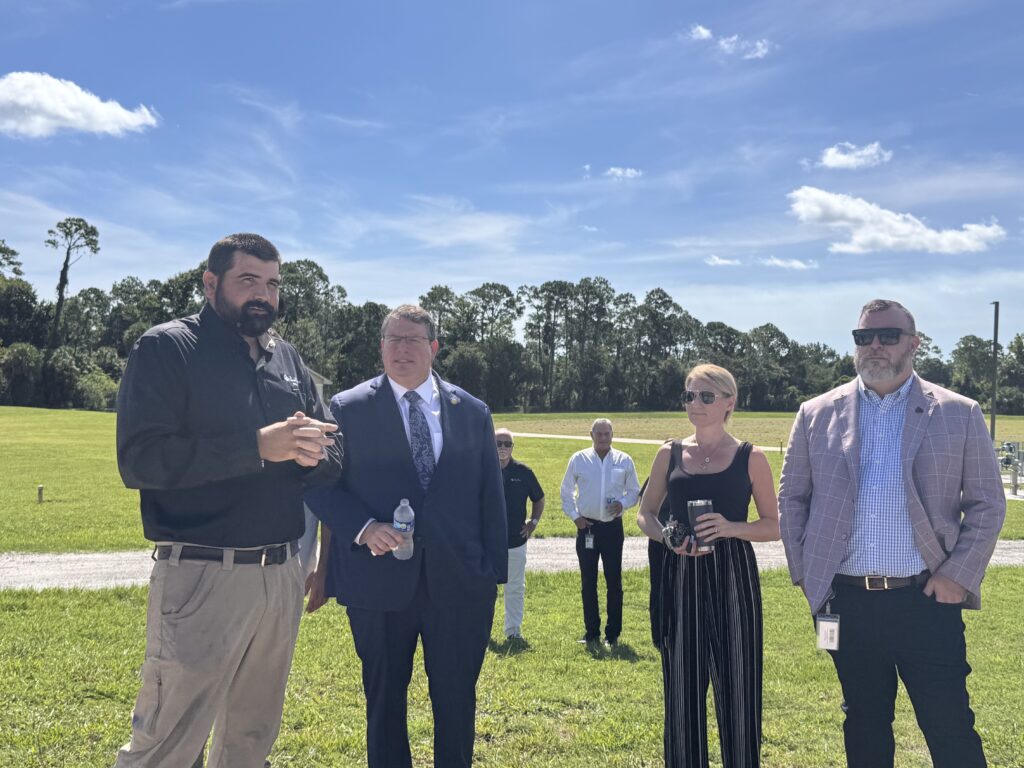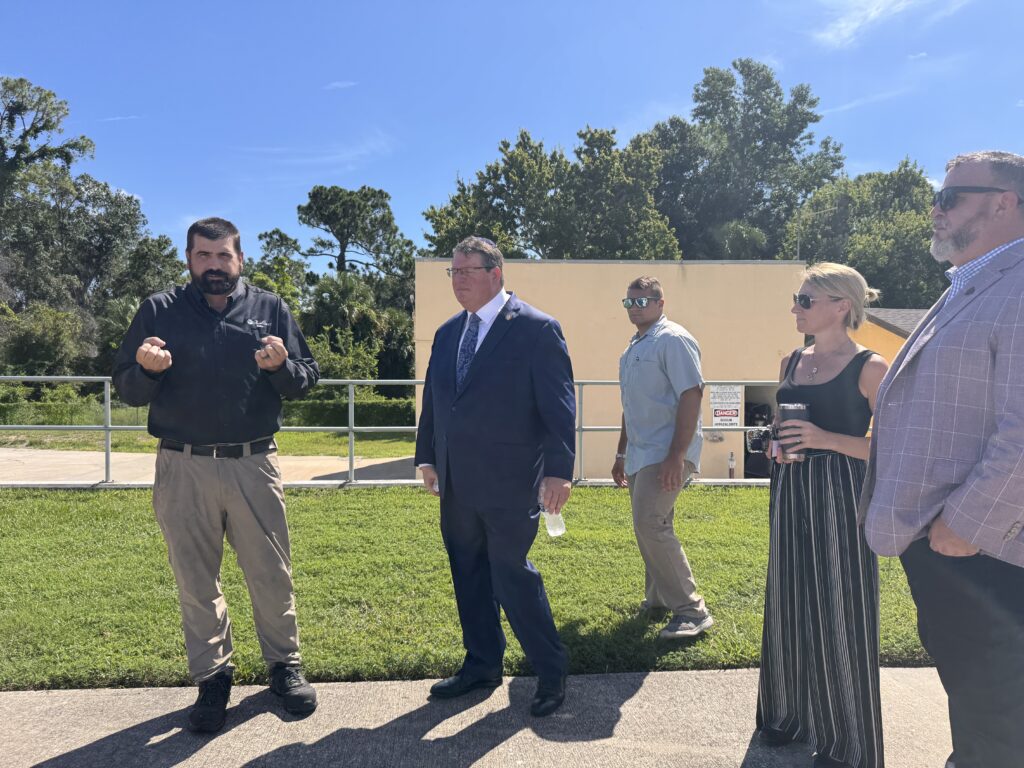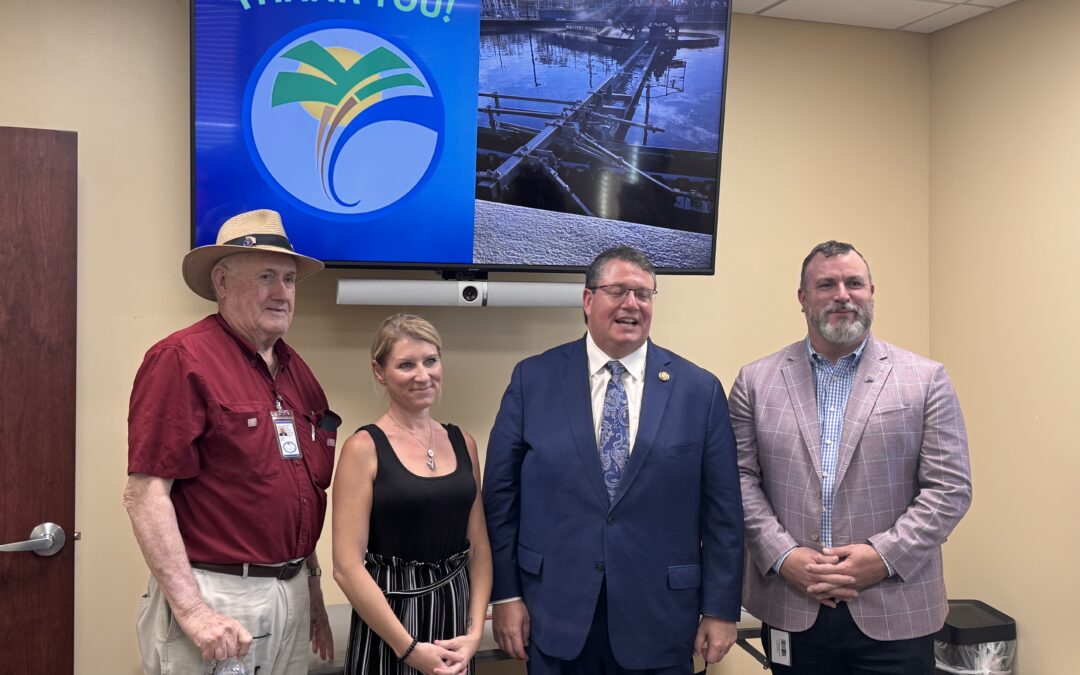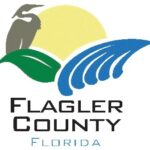Congressman Randy Fine recently toured Palm Coast’s Wastewater Treatment Plant 1 to learn about the city’s infrastructure challenges and discuss potential federal funding opportunities for expansion projects.
Plant Operations and Service Area
The tour began with an overview of Palm Coast’s wastewater system, which serves approximately 110,000 residents through two treatment plants. Plant 1, built in the 1970s and expanded multiple times since then, currently has a capacity of 6.83 million gallons per day and serves the area south of Palm Coast Parkway and east of US 1.
A utility official explained that nearly all Palm Coast residents are connected to the sewer system, with very few still using septic tanks. The plant has grown significantly since its early days, starting as a 300,000-gallon facility and expanding to its current capacity over the decades.
The facility includes three oxidation ditches with clarifiers, digesters for sludge processing, and filtration systems. Plant officials noted that most of the current infrastructure has been built since 1981, representing continuous expansion to meet growing demand.
Current Capacity Challenges
During the discussion, officials revealed that the plant operates close to its capacity limits during normal conditions, averaging 6.5 million gallons per day. However, the real challenge comes during wet weather events when stormwater infiltration dramatically increases flows.
“We put 14 million gallons through this plant in one day during Hurricane Milton,” explained a plant official, highlighting how extreme weather can overwhelm the system. This occurs not because residents use more water during storms, but because rainwater enters the sewer system through leaks and infiltration points.
The congressman noted his understanding of this issue, stating, “I’ve learned, you know, people say, oh, we get overwhelmed during hurricanes. And if you think about it, that should not be when you get overwhelmed, because typically, a lot of people evacuate, they may not be doing laundry, their actual water use goes down.”

Environmental Concerns and Treatment Standards
The facility currently operates as a Class B treatment plant, meaning it meets basic treatment standards but does not have advanced waste treatment capabilities. Treated water is discharged into the Intracoastal Waterway as a last resort, though officials emphasized this rarely occurs.
“I think we did it for two days last year,” a plant official said regarding discharges to the waterway. The facility prioritizes using treated water for irrigation through its reuse system and discharging to rapid infiltration basins when possible.
The congressman expressed concern about nutrients like nitrogen and phosphorus in treated water, explaining, “It’s the nitrogen and phosphorus that feed the algae,” and can harm water quality. Plans for the plant expansion include converting to advanced waste treatment to reduce these nutrients.
Expansion Plans and Funding Challenges
Officials outlined ambitious expansion plans to increase Plant 1’s capacity to 10.83 million gallons per day by adding 4 million gallons of advanced treatment capacity. The project includes an equalization tank and conversion of existing facilities to advanced waste treatment standards.
However, funding remains a significant challenge. The city is facing approximately $280 million in infrastructure needs, which would provide capacity for about 19,000 additional homes that already have development entitlements.
“That’s $14,000 a house, and that’s a lot,” the congressman observed about the per-unit cost of expansion. Officials explained this represents only selected priority projects, not the full scope of needed improvements.
The utility currently brings in about $75 million annually in user fees, with that amount expected to rise to $85 million next year following recent rate increases. The city has already raised impact fees to the statutory maximum and increased utility rates for existing customers.

Unique Infrastructure Legacy
A significant factor in Palm Coast’s infrastructure challenges stems from its original development by ITT in the 1970s. The developer created a pressure sewer system called PEPs (Pressure Effluent Pumps) to avoid deep excavation costs.
“Right now I think there’s 17,000 PEP tanks in the ground, and I think the build-out is 24,” explained a plant official. These individual 1,500-gallon tanks function like septic systems without drain fields, each requiring a small pump to move waste to the main sewer system.
The PEP system creates ongoing maintenance challenges and allows additional stormwater infiltration during flood events. Officials described it as “one of our nemesis here” due to its maintenance-intensive nature.
Federal Funding Opportunities
The congressman indicated willingness to help secure federal funding, noting he recently obtained $5 million for the nearby city of Bunnell’s wastewater system. However, he emphasized that infrastructure is primarily a local government responsibility.
“Fundamentally, it is a local government responsibility. We have this thing called home rule,” the congressman said, while acknowledging that federal assistance is appropriate when environmental impacts extend beyond local boundaries.
Officials are actively pursuing various funding sources, including state revolving fund loans, grant opportunities, and potential state appropriations. They noted that many water-related appropriations were vetoed by the governor in recent legislative sessions, with funding redirected to hurricane-affected areas in the panhandle.

Environmental and Growth Considerations
The tour highlighted the connection between infrastructure capacity and Florida’s continued growth. The congressman emphasized the importance of responsible development that protects water resources, stating, “People come here because they want, whether it’s the ocean, the intercoastal, or the St. John’s, that’s why they come here.”
Officials explained that the expansion project aims not only to accommodate growth but also to reduce emergency discharges to waterways during extreme weather events. The advanced treatment conversion will significantly reduce nutrient pollution that contributes to algae blooms and water quality problems.
The facility also operates an extensive reuse water system for irrigation, which officials described as “a big asset to our system and the environment” because it reduces demand on the aquifer while recharging groundwater supplies.
The tour concluded with plans for a brief outdoor inspection of the facility, though officials noted that ongoing construction limited access to some areas of the plant.









